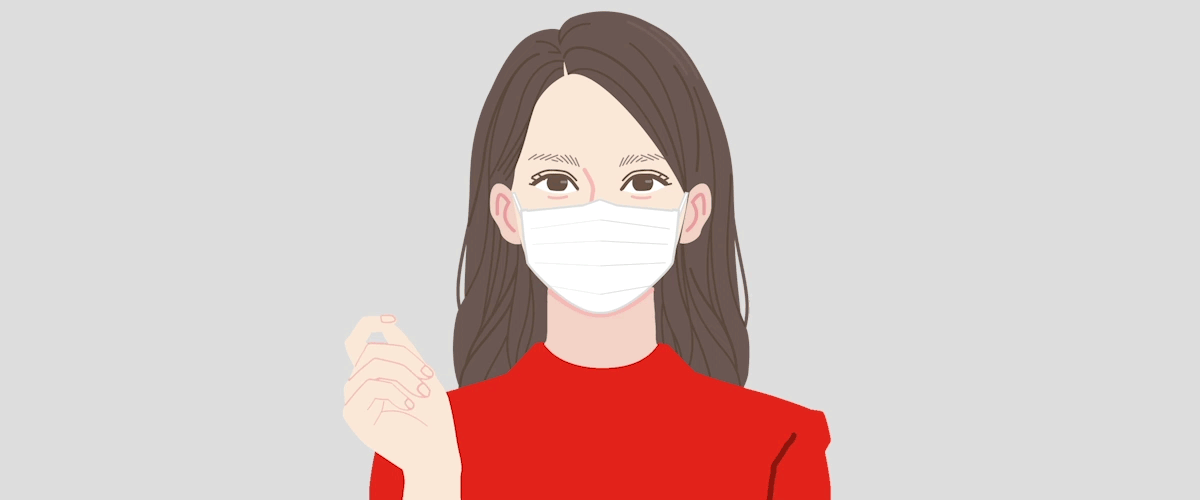What Is Maskne and What Causes It?
A dermatologist explains how to prevent and treat acne flare-ups caused by wearing a mask, also known as “maskne.”

The Centers for Disease Control and Prevention has advised everyone to wear cloth face coverings in public to help slow the spread of COVID-19. But while face masks are effective and critical tools in the fight against coronavirus, wearing them regularly has also led to a condition that dermatologists have nicknamed “maskne” — acne flare-ups or skin irritation from wearing face coverings.
Maskne isn’t a new phenomenon, says Dr. Shari Lipner, an associate professor of clinical dermatology and an associate attending physician at NewYork-Presbyterian/Weill Cornell Medical Center. People who are required to wear protective face or head coverings because of their work — such as medical professionals, construction workers, or football players — may already be familiar with the condition, formally known as acne mechanica.
“I have seen acne mechanica frequently, but more often in the forehead or hairline areas. There has been an uptick in cases in the central face area since the pandemic, specifically from mask-wearing,” notes Dr. Lipner. “Anything that causes friction can cause the skin to get irritated and inflamed, trap bacteria, oil, and sweat — and result in acne.”
Health Matters spoke with Dr. Lipner about what you need to know about maskne, including tips for prevention and how to treat mask-related breakouts.

Dr. Shari Lipner
What skin-care routine is best for preventing maskne?
It’s best to wash your face with a gentle, fragrance-free cleanser twice a day, morning and night. If you can, try to avoid makeup. If you want to wear makeup, look for products that are noncomedogenic or oil-free. Harsh soaps and fragrances can further irritate the skin, and oils can make you more prone to developing acne. You also want to use a light, fragrance-free moisturizer, which can add a protective layer and ease the rubbing of the mask on the skin.
In the winter, it is very important to nurture your skin barrier, or the outer layer of skin, and make sure you’re not drying it out. Use a gentle cleanser and be religious about moisturizing.
What ingredients should you avoid if you’re worried about acne flare-ups?
Retinol-based products can be very irritating to the skin. People who have been using a retinol-type product for years might be accustomed to it and may continue using it. If you’ve never used a retinol product, this wouldn’t be the time to start. Another thing you may want to tailor is the type of sunscreen you use. It is always important to protect the skin from ultraviolet rays, even in the colder months. But it’s better to use mineral sunscreens, which are less likely to cause breakouts, such as those that are zinc oxide-based as opposed to chemical sunscreens.
Can facial hair contribute to maskne?
For facial hair, the most important thing to consider is the fit of the mask. For example, long beards can impact the fit of the mask. If you have a lot of facial hair, it may make you more likely to sweat, which can lead to maskne. However, if you’re shaving often and getting a close shave, that can also irritate the skin and make you more prone to acne. So, it’s important to strike a balance as to not irritate your skin but also make sure that the mask fits and isn’t causing too much sweating.
I still recommend washing the face twice daily and using a moisturizer. You may want to consider using shampoo to wash your beard too.
What kinds of mask fabrics should you consider?
It’s best to use a more breathable fabric to prevent breakouts. Good examples are 100% cotton or silk, since they are less likely to rub against the skin. Make sure that any mask you use has at least two layers, giving you better protection against the coronavirus.
What are some best practices for mask care?
If you’re using a disposable mask, I would recommend using a new one every day. If you’re using a cotton mask, it’s best to wash the mask or use a new mask every day. If you’re the type of person who sweats a lot, you may want to change your mask twice a day. With sweating, more humidity and moisture become trapped under the mask, which is more likely to cause maskne.
How can you tell if you have maskne?
It’s important to know that not every rash that develops under the mask is acne. I am seeing a lot of cases of contact dermatitis too, which is a type of skin allergy, and that’s treated very differently. An example of allergic contact dermatitis is poison ivy, which causes linear rashes. Elastic and nickel can cause reactions in some people as well.
Features common with acne are little red bumps (papules) or comedones, which are blackheads and whiteheads. Sometimes you can also see little pus bumps called pustules. With contact dermatitis there can also be fluid-filled bumps (vesicles). Dermatitis tends to be very itchy. Acne is less likely to be itchy.
How can you treat maskne?
There are some easy over-the-counter solutions. One is benzoyl peroxide, which comes in different percentages. I would stick with a lower percentage, such as 2% or 5%. You can also use salicylic acid, which comes in cleanser form as well. But if your acne is not improving within a week or two of over-the-counter treatment, see a board-certified dermatologist, because you may not have acne. Most importantly, if acne is not treated the right way, it can cause permanent scarring.
Shari Lipner, M.D., Ph.D., is a board-certified dermatologist at NewYork-Presbyterian/Weill Cornell Medical Center and an associate professor of clinical dermatology at Weill Cornell Medicine. She treats patients with skin, hair and nail conditions, as well as, skin cancers, and cosmetic concerns. She has authored more than 170 manuscripts and book chapters on skin and nail diseases and cosmetics, lectures nationwide, and is frequently called upon by the media for her expert opinion.
